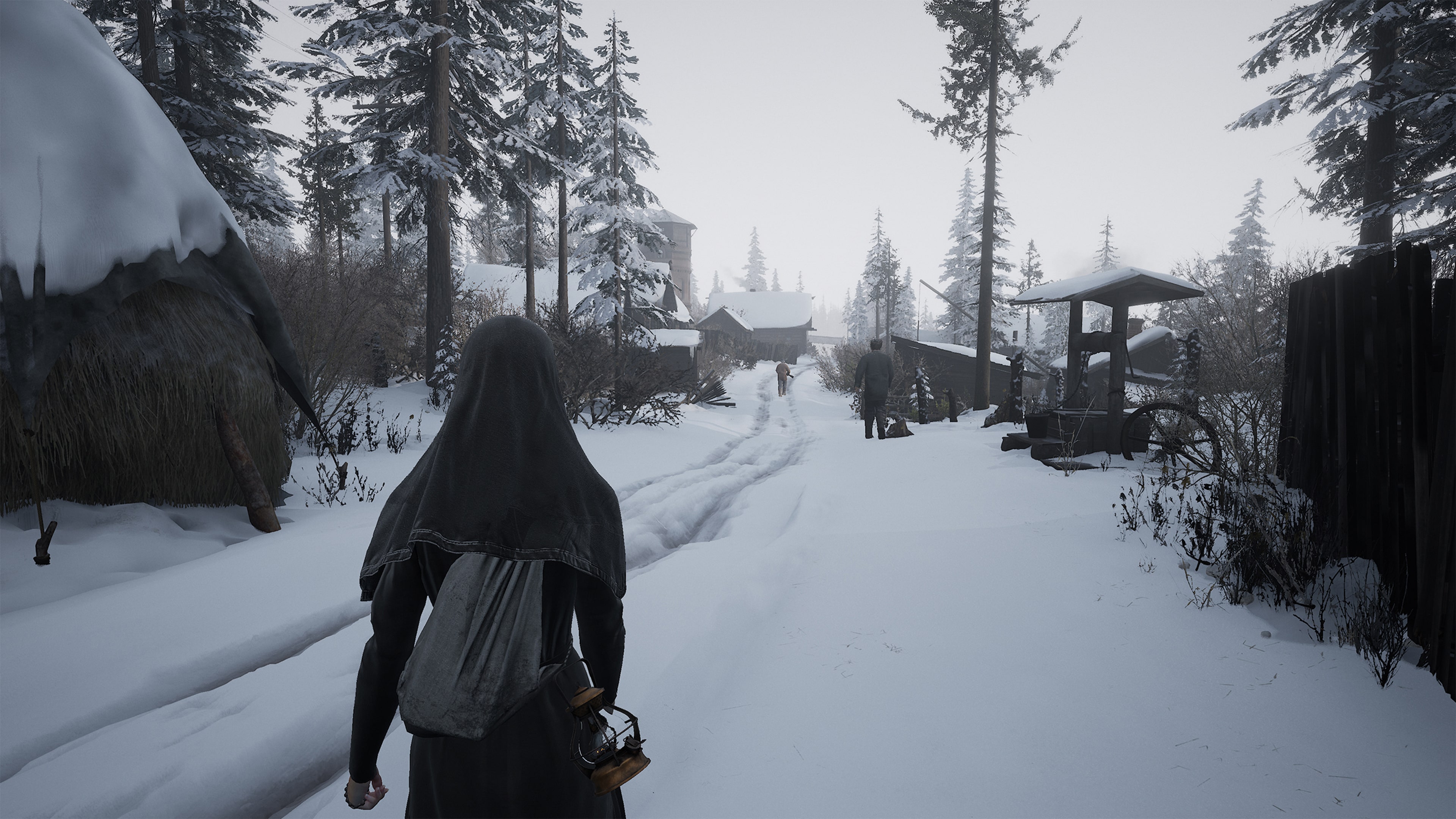
I have played video games since I was old enough to hold a controller. I cut my teeth on the Sega Genesis and my parents’ Apple Macintosh computer. I’ve been a console and PC gamer ever since, and I’ve played thousands of titles over the years. I say all of that because I’ve never played anything quite like INDIKA in all that time.
While you can pick apart the elements of INDIKA and categorize its gameplay, once you put everything together, it becomes more than the sum of its parts. It’s wild, weird, funny, and even profound. It’s not for everyone, but is it for you? Let’s find out.
A Fever Dream of a Game
INDIKA is a third-person adventure set in an alternate version of 19th-century Russia. You play as a nun named Indika, who is a bit of a black swan among the others at her convent. From the beginning of the game, it’s very clear that the other look down on her.
As if this wasn’t enough, Indika also hears a voice she’s convinced is the devil himself speaking to her. I told you this was going to get weird. There are a few odd moments from the beginning, but the opening is purposefully simple from a gameplay standpoint.
You run simple errands and perform chores for a few other nuns as the devil’s voice waxes poetic and chastises you. You collect points, contributing to a simple skill tree that offers abilities that ultimately earn you more points.
From the beginning, the game informs you that these points don’t matter, and they don’t. You won’t get any special endings or secret unlocks from collecting them (or the collectibles you can find), but the presence of the whole system reminds you that you’re still playing a video game at the end of the day.
There’s also something surreal about doing something simple like filling up a bucket of water from a well, only to be rewarded but retro-style pixelated coins that wouldn’t be out of place in a Mario title.
As the game progresses, INDIKA leans into the surreal and strange nature of its character and the world around her. This alternate version of Russia is bleak and filled with strange side characters. It’s also violent, as she soon crosses paths with a wounded soldier companion who is seeking help.
The two become an unlikely duo as the game goes on, venturing through various environments, from a dilapidated village to a canning factory. At certain points in the story, you’ll also see flashbacks that flesh out Indika’s backstory.
These are presented in a retro pixelated style and often require precise platforming or simple arcade-style gameplay. They offer a nice variety to the main game, mainly exploration and puzzle-solving. When you combine both pieces, even though the entire experience only lasts about 5-6 hours, you get a lot of variety across INDIKA.
I particularly enjoyed the moments when the devil’s voice in Indika’s head becomes overwhelming, leading to strange environmental changes. To progress, you must hold a trigger to pray, which returns the world to its original state until you let go. It perfectly blends setting and gameplay, weaving the story into the puzzles. It’s easily one of my favorite elements in the game. I only wish we had seen it used more.
However, as the game progresses, especially towards the end, it quickly abandons the more surreal and strange elements of the beginning in favor of a more grounded and character-driven story. That’s not to say you won’t see strange sights until the credits roll, but the overall weirdness takes a backseat as the game progresses.
I would have loved seeing even more strange and surreal elements peppered throughout the game. Those who have seen the trailers will no doubt expect such things, and they’ll get them, but I feel like it could have leaned more into these elements.
Even so, the conclusion is satisfying and leaves you with plenty to ponder. It’s a journey in every sense of the word, taking you across multiple environments and on a spiritual journey within Indika’s mind.
More Than the Sum of its Parts

INDIKA’s presentation is excellent, given its price and budget. The game’s world is well realized with a cohesive art style and convincing animations. Indika herself feels very real, all the way down to her nervous ticks and how she clutches her rosary when she prays to silence the voice in her head.
The voice acting is convincing, and the writing perfectly balances absurd moments with moments where existential dread sets in and the two main characters debate the nature of things like faith and miracles. It’s a game that deftly delivers its core message without beating you over the head.
I have to also give a nod to the music, which feels out of place in all the best ways. Much like the game’s weirder elements, the tracks you’ll hear during your time in INDIKA are as varied as they are strange, but they still convey the proper mood and atmosphere all the same. It’s one of those soundtracks where you’re not sure how it works, but it absolutely does.
INDIKA’s unique setting and surreal elements may not work for everyone, but no one can deny that it’s packed with style and charm. It’s a game unlike any other, even if its gameplay elements can be traced to other titles and genres.
It’s games like this one that remind me why I’m a gamer. When you think you’ve seen everything, something like INDIKA comes along and reminds you that there are still plenty of stories waiting to be told.
Final Score: 7.5/10
Article by – Bradley Ramsey
Insert date – 5/21/2024
